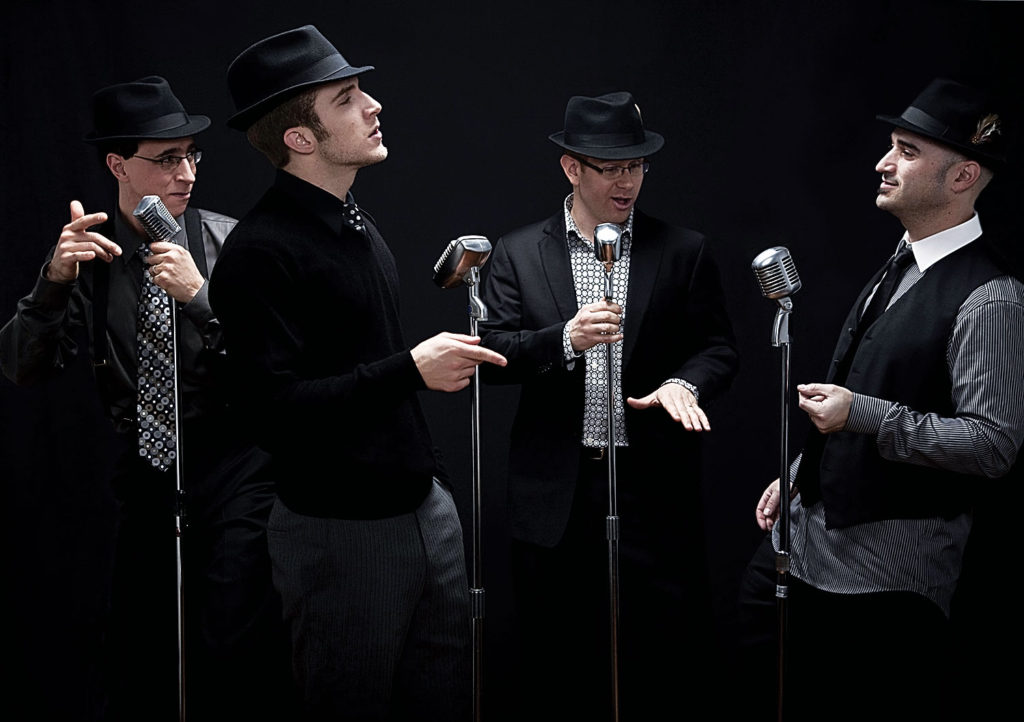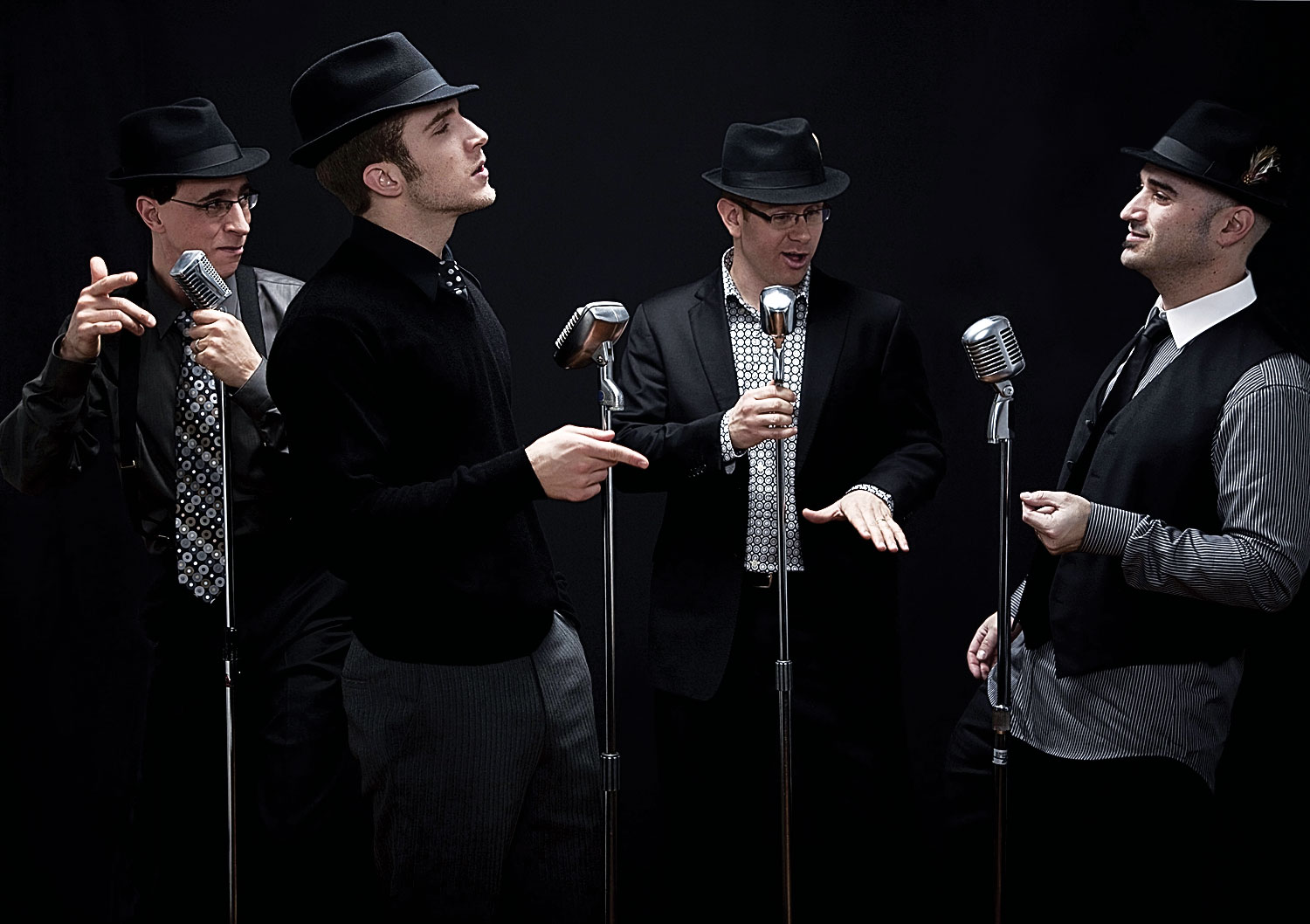Leslie Armstrong
Contributor
Before the show, the four fedoras hung upon the microphones on the stage at the Winters Dining Hall.
It was a quaint little gesture, but it summed up the spirit of the night: simple, with charming theatrics.
In fact, the only instrument used in the whole show was a tuner. It’s a shame only half the seats were filled the night jazz vocal quartet Cadence returned to York University Nov. 23 to show off their cathartic a cappella vocals free of charge.
In music theory, cadence refers to the chords used to signify the end of a musical phrase or song. It’s an appropriate name for a band that is infallibly synchronized and in tune.
The night was more of a show than a concert. Admittedly, I giggled like a baby as the four singers marched in line while mocking the sound of trumpets with incredible realism. It reminded me of that golden scene in The Jungle Book where Louis Prima shows off his scattastic abilities.
Cadence’s real strength as a group lies in their volume control. The swelling dynamics in their rendition of Paul Simon’s “Still Crazy After All These Years” brought the music to a crescendo, sending shivers up my spine.
Cadence, three of whose members are Winters College alumni, is bigger than you’d think – two of their albums have been nominated for Juno awards. Twenty For One, released in 2005, was also nominated for Best Jazz Song against tracks by Diana Krall and Paul Anka. Despite not winning the award, the group remains optimistic.
“It’s a curse to win the Juno award. The next year of your career will be the hardest year,” said Carl Berger. He refers, of course, to the anticipation and expectation placed on an award-winning musician. “It’s a mixed blessing.”
A cover of Kurt Weill’s “Tschaikowsky (and Other Russians)” only added to the show. Though the song is easily ruined, the group executed it beautifully.
Another plus was a cover of Gordon Lightfoot’s “Canadian Railroad Trilogy,” arguably his best song. The cover was strangely altered from being woodsy and hearty to contemporary, with a little bit of beat boxing underneath. It was weird, and somehow all the more beautiful.
I appreciated the collective charisma of the group, which had no designated front man. Aaron Jensen started the seventh set with a question to the audience: “How many of you are in love?” No one raises their hand; everyone looks to their neighbour. “The good news is, this is not one of those songs.” Laughter cuts the tension.
It’s a real mark of talent that four men can create a symphony with nothing but their own voices. It’s also a reminder for fine arts students to explore the possibilities of their art form regardless of what materials they have at their disposal.
For more information on Cadence and upcoming shows, check out cadence-unplugged.com.
Cadence fast facts ›
The Members
Aaron Jensen (tenor) – York composition graduate – His scores have been performed in Europe, Asia and North and South America
Kurt Sampson (bass and vocal percussion) – McGill jazz performance grad
– Also taught at McGill and directed their jazz orchestra
Ross Lynde (tenor) – York performance graduate – also plays rock’n’roll guitar
Carl Berger (baritone and bass) – York music graduate – Has been singing a cappella since high school
The Albums
Frost Free (2000) – Two tracks nominated for the 2001 Juno Award for Best Recording Engineer
Twenty For One (2005) – 2006 Juno nominee for Vocal Jazz Album of the Year – “Dry Cleaner from Des Moines” nominated for the 2006 Juno Award for Best Recording Engineer
Compiled by John Nyman

Cadence fulfills York’s a cappella fantasies

